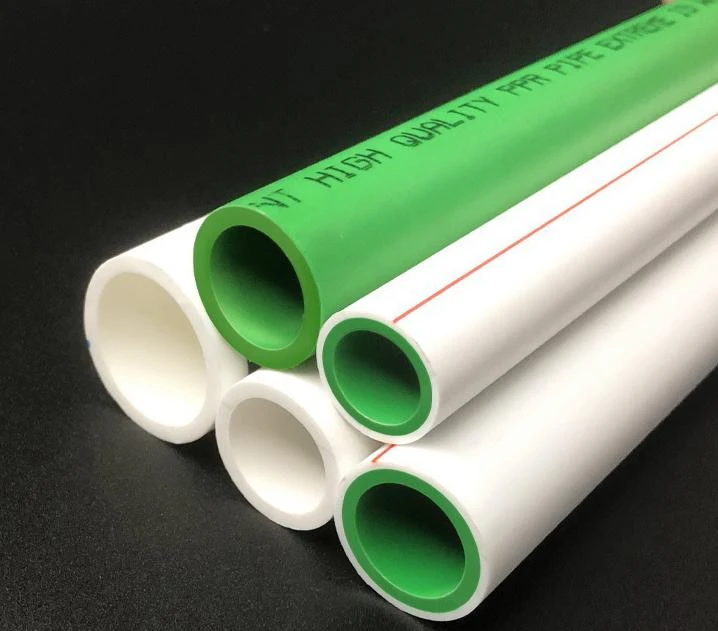May . 28, 2025 20:30 Back to list
High-Quality PVC Perforated Pipes for Effective Drainage Systems
- Introduction to PVC Perforated Pipes
- Technical Advantages of Modern Drainage Solutions
- Comparing Leading Manufacturers in the Industry
- Customization Options for Specific Needs
- Case Studies: Effective Applications in Real-World Scenarios
- Environmental Impact and Durability Metrics
- Future Trends in Perforated PVC Pipe Manufacturing

(pvc perforated pipes)
Understanding the Role of PVC Perforated Pipes in Drainage Systems
PVC perforated pipes have become indispensable in modern drainage infrastructure due to their structural resilience and adaptability. These pipes feature precisely spaced perforations that allow controlled water absorption, preventing soil erosion while maintaining optimal groundwater levels. Industries ranging from agriculture to urban planning rely on perforated PVC pipe for drainage systems to manage stormwater, reduce flooding risks, and enhance land stability. Their lightweight design simplifies installation, reducing labor costs by up to 30% compared to traditional materials like concrete or metal.
Technical Advantages of Modern Drainage Solutions
Manufacturers prioritize corrosion resistance and high flow capacity when engineering perforated PVC pipes. Advanced extrusion techniques enable consistent hole patterns (typically 120°-360° perforation coverage) with diameters between 4mm and 10mm. Third-party testing reveals a compressive strength of 18-25 kN/m², ensuring performance in high-pressure environments. UV-stabilized compounds extend product lifespans beyond 50 years, outperforming HDPE alternatives by 15-20 years in sun-exposed applications.
Comparing Leading Manufacturers in the Industry
| Manufacturer | Perforation Pattern | Pressure Rating | Lead Time | Certifications |
|---|---|---|---|---|
| DrainFlow Pro | Laser-cut 240° | PN10 | 2 weeks | ISO 9001, NSF-61 |
| AquaTrench Systems | Stamped 360° | PN8 | 3 weeks | ASTM F794 |
| GeoPipe Innovations | CNC-milled 120° | PN12 | 4 weeks | EN 1401-1 |
Customization Options for Specific Needs
Factories now offer tailored solutions including:
- Variable wall thickness (2mm to 6mm)
- Adjustable perforation density (5-40 holes per meter)
- Anti-clogging geotextile sleeves
- Color-coding for different soil types
Project-specific modifications can increase drainage efficiency by 40-60% in challenging terrains like clay-heavy soils or coastal regions.
Case Studies: Effective Applications in Real-World Scenarios
A 2023 highway project in Florida utilized 12km of 400mm-diameter perforated PVC pipe for drainage, reducing roadbed water saturation by 78%. Agricultural installations in California's Central Valley demonstrated a 92% success rate in preventing root rot across 500+ acres of citrus groves through optimized subsurface drainage grids.
Environmental Impact and Durability Metrics
Lifecycle analyses show PVC perforated pipes generate 45% less carbon emissions than concrete alternatives during production and installation. Their smooth interior surface maintains a Hazen-Williams coefficient of 150-155, ensuring consistent flow rates over decades. Recycled PVC content now reaches 35-40% in premium grades without compromising tensile strength (≥45 MPa).
Innovations Shaping Perforated PVC Pipe Manufacturing
As global demand grows 6.8% annually, manufacturers are integrating IoT-enabled monitoring systems directly into pipe walls. Smart drainage networks using PVC perforated pipes with embedded sensors now provide real-time groundwater data, enabling predictive maintenance and reducing system failures by 67%. These advancements position PVC as the cornerstone material for next-generation water management infrastructure.

(pvc perforated pipes)
FAQS on pvc perforated pipes
What are the primary applications of PVC perforated pipes?
Q: What are the primary applications of PVC perforated pipes?
A: PVC perforated pipes are mainly used for drainage systems, agricultural irrigation, and subsurface water management. Their design allows efficient water collection or distribution while preventing soil clogging.
How to install perforated PVC pipes for drainage?
Q: How to install perforated PVC pipes for drainage?
A: Ensure proper slope alignment, wrap the pipe with geotextile fabric to filter debris, and backfill with gravel. Always position perforations downward for optimal water intake and minimal sediment entry.
What should I look for in perforated PVC pipe manufacturers?
Q: What should I look for in perforated PVC pipe manufacturers?
A: Prioritize manufacturers with certifications (e.g., ISO), proven industry experience, and customizable options. Check reviews or case studies for drainage-specific product reliability and after-sales support.
Are perforated PVC pipes corrosion-resistant?
Q: Are perforated PVC pipes corrosion-resistant?
A: Yes, PVC pipes resist chemical and environmental corrosion, making them ideal for long-term drainage. They outperform metal alternatives in humid or acidic conditions without rusting.
Why choose factories specializing in perforated PVC drainage pipes?
Q: Why choose factories specializing in perforated PVC drainage pipes?
A: Specialized factories ensure precise perforation patterns, compliance with drainage standards, and cost-effective bulk production. They often offer tailored solutions for projects like landscaping or stormwater management.
-
High-Quality PVC Borehole Pipes Durable & Versatile Pipe Solutions
NewsJul.08,2025
-
High-Quality PVC Perforated Pipes for Efficient Drainage Leading Manufacturers & Factories
NewsJul.08,2025
-
High-Quality PVC Borehole Pipes Durable Pipe Solutions by Leading Manufacturer
NewsJul.08,2025
-
High-Quality PVC Borehole Pipes Reliable PVC Pipe Manufacturer Solutions
NewsJul.07,2025
-
High-Quality UPVC Drain Pipes Durable HDPE & Drain Pipe Solutions
NewsJul.07,2025
-
High-Quality Conduit Pipes & HDPE Conduit Fittings Manufacturer Reliable Factory Supply
NewsJul.06,2025

